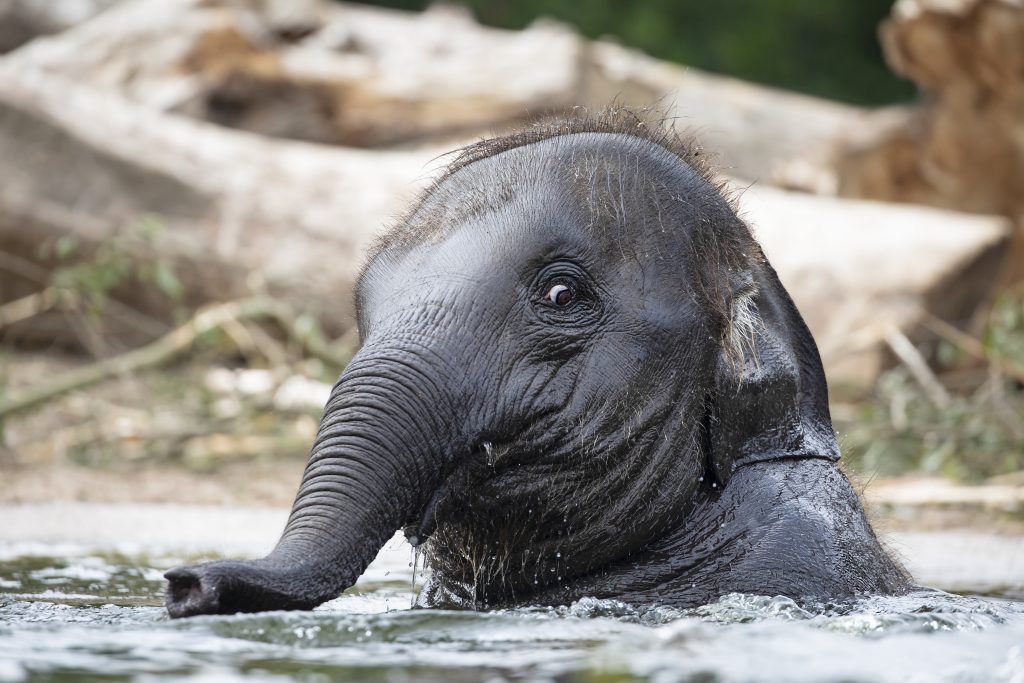The elephant is distinctive in some respects. They possess gigantic proportions, limbs, ears, and many other features. But today, we’ll talk about an elephant’s vision. Therefore, do elephants have good vision? The answer is no. Elephants can’t see very well.
The way each animal perceives the world varies. Some animals have exceptional vision, while others have blurry vision. Elephants are among the animals that are not endowed with good vision. Despite their size, elephants do not have flawless vision. An elephant sees the world differently than people and other animals do. Their eyesight is not as amazing as their other body parts, even though they can still see and use their eyes every day.
This post is for you if you want to learn more about elephant eyesight. You will be fully informed regarding an elephant’s vision. You’ll comprehend the elephants’ eyesight and why they view things the way they do. So let’s get going.

When it comes to good vision, elephants can see clearly within a few meters. Elephants have excellent vision at a close range of roughly 10 meters. Elephants’ eyesight is poor. Elephants only have 20-meter vision due to their weak eyesight.
Do Elephants See Color?
Elephants are colorblind, which is one of the less well-known facts about elephant eyesight. Elephants are dichromic during the day, which means their retinas have two different types of color sensors. Red and green are represented by different types of cones. Elephant vision is comparable to that of colorblind people.
They can see the hues blue and yellow, but they are unable to distinguish between red and green. How long is an elephant’s pregnancy? is a frequently asked query. An elephant’s gestation lasts, on average, 18 to 22 months. This prolonged period aids the calf’s development so that it is completely prepared to move and learn from its group.
An elephant’s calf is born virtually completely blind, even though an elephant takes about two years to develop in the womb. Over time, their view begins to broaden. They depend significantly on their mothers for direction in the beginning.
Can Elephants See Clearly?
An elephant’s eyes are very small. Due to the elephant’s enormous remainder of its body, it is simple to compare. However, compared to human eyes, their eyes are barely larger. The elephant’s eyes are situated along either side of the elephant’s head. They can have limited peripheral vision in this position. Although they are born blind, elephants eventually develop eyesight. Elephants are color blind as well.
Their worldviews are divergent. The elephants’ eyesight is likewise quite weak. Elephants see only up to a distance of 25 feet. Research indicates that elephants do not perceive doubles. They have terrible vision. Elephants have improved near-range vision.
Elephants’ vision isn’t very good at large distances, though. Due to their color blindness, elephants also have poor vision. However, at night, elephants have far better vision.
What animals are not color blind?
Dogs and cats have evolved to be exceptionally well-suited for nocturnal hunting. The rod cells, which are sensitive to low light, are abundant in their eyes. This implies that they can see normally with as little as 15% of the amount of light required by humans. Additionally, their pupils behave similarly to a camera’s aperture, dilating noticeably when they need to take in more light.
The Skate fish is the only creature that has been proven to see entirely in black and white. This is a result of the lack of cones in its eyes.
How Do Toucans Adapt to the Rainforest Environment?
Toucans and rainforest adaptation go hand in hand. These fascinating birds have evolved unique characteristics to thrive in their lush, tropical habitat. With their large, colorful beaks, toucans can easily reach fruits and berries, their primary food source. Additionally, their short wings allow them to maneuver swiftly through the dense rainforest foliage, while their vibrant feathers provide excellent camouflage in the vibrant surroundings. This perfect combination of physical adaptations ensures the toucans’ survival in the diverse and challenging rainforest environment.
Why do elephants have bad eyesight?
The cause of elephants’ poor eyesight has not yet been determined by researchers. We can blame nature as it gave the elephant poor eyesight. Even though elephants have poor eyesight, they make up for it with exceptional hearing and smell senses.
People often wonder if elephants have good night vision. But it’s rather fascinating. One of the creatures displaying arrhythmic eyesight is the elephant. Arrhythmic vision refers to a diurnal alteration in the elephant’s vision.
The elephants’ eyes will become more susceptible to violet light once darkness falls. This means that as long as the primary color of the air is within the violet range, elephants can see reasonably well even in the absence of much sunlight.










